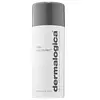What's inside
What's inside
 Key Ingredients
Key Ingredients

 Benefits
Benefits

 Concerns
Concerns

 Ingredients Side-by-side
Ingredients Side-by-side

Microcrystalline Cellulose
AbsorbentMagnesium Oxide
AbsorbentSodium Cocoyl Isethionate
CleansingColloidal Oatmeal
AbsorbentDisodium Lauryl Sulfosuccinate
CleansingSodium Lauroyl Glutamate
Oryza Sativa Bran Extract
Skin ConditioningOryza Sativa Starch
AbsorbentHydrogenated Coconut Acid
EmollientAllantoin
Skin ConditioningPapain
Skin ConditioningSalicylic Acid
MaskingGinkgo Biloba Leaf Extract
Skin ConditioningCamellia Sinensis Leaf Extract
AntimicrobialGlycyrrhiza Glabra Root Extract
BleachingPCA
HumectantPopulus Tremuloides Bark Extract
AntiseborrhoeicCyclodextrin
AbsorbentSodium Isethionate
CleansingLauryl Methacrylate
Maltodextrin
AbsorbentMelaleuca Alternifolia Leaf Oil
AntioxidantCitrus Paradisi Peel Oil
MaskingSodium Dehydroacetate
PreservativeHydrolyzed Corn Starch Hydroxyethyl Ether
Emulsion StabilisingWater
Skin ConditioningLimonene
PerfumingCitric Acid
BufferingMicrocrystalline Cellulose, Magnesium Oxide, Sodium Cocoyl Isethionate, Colloidal Oatmeal, Disodium Lauryl Sulfosuccinate, Sodium Lauroyl Glutamate, Oryza Sativa Bran Extract, Oryza Sativa Starch, Hydrogenated Coconut Acid, Allantoin, Papain, Salicylic Acid, Ginkgo Biloba Leaf Extract, Camellia Sinensis Leaf Extract, Glycyrrhiza Glabra Root Extract, PCA, Populus Tremuloides Bark Extract, Cyclodextrin, Sodium Isethionate, Lauryl Methacrylate, Maltodextrin, Melaleuca Alternifolia Leaf Oil, Citrus Paradisi Peel Oil, Sodium Dehydroacetate, Hydrolyzed Corn Starch Hydroxyethyl Ether, Water, Limonene, Citric Acid
Water
Skin ConditioningMannitol
HumectantArginine
MaskingTrehalose
HumectantSorbitol
HumectantTromethamine
BufferingSodium Laureth Sulfate
CleansingEthoxydiglycol
HumectantPEG-7 Glyceryl Cocoate
EmulsifyingAcrylates/C10-30 Alkyl Acrylate Crosspolymer
Emulsion StabilisingMicrocrystalline Wax
Emulsion StabilisingParfum
MaskingPolysorbate 20
EmulsifyingLaureth-21
CleansingSodium Hydroxide
BufferingHydroxyethylcellulose
Emulsion StabilisingTetrasodium EDTA
Benzophenone-4
UV AbsorberLactobacillus/Papaya Fruit Ferment Extract
AbrasiveIsopropyl Myristate
EmollientGlycerin
HumectantPanax Ginseng Root Extract
EmollientLeuconostoc/Radish Root Ferment Filtrate
AntimicrobialCitrus Junos Extract
AntioxidantPhenoxyethanol
PreservativeSolvent Yellow 33
Water, Mannitol, Arginine, Trehalose, Sorbitol, Tromethamine, Sodium Laureth Sulfate, Ethoxydiglycol, PEG-7 Glyceryl Cocoate, Acrylates/C10-30 Alkyl Acrylate Crosspolymer, Microcrystalline Wax, Parfum, Polysorbate 20, Laureth-21, Sodium Hydroxide, Hydroxyethylcellulose, Tetrasodium EDTA, Benzophenone-4, Lactobacillus/Papaya Fruit Ferment Extract, Isopropyl Myristate, Glycerin, Panax Ginseng Root Extract, Leuconostoc/Radish Root Ferment Filtrate, Citrus Junos Extract, Phenoxyethanol, Solvent Yellow 33
 Reviews
Reviews

Ingredients Explained
These ingredients are found in both products.
Ingredients higher up in an ingredient list are typically present in a larger amount.
Water. It's the most common cosmetic ingredient of all. You'll usually see it at the top of ingredient lists, meaning that it makes up the largest part of the product.
So why is it so popular? Water most often acts as a solvent - this means that it helps dissolve other ingredients into the formulation.
You'll also recognize water as that liquid we all need to stay alive. If you see this, drink a glass of water. Stay hydrated!
Learn more about Water